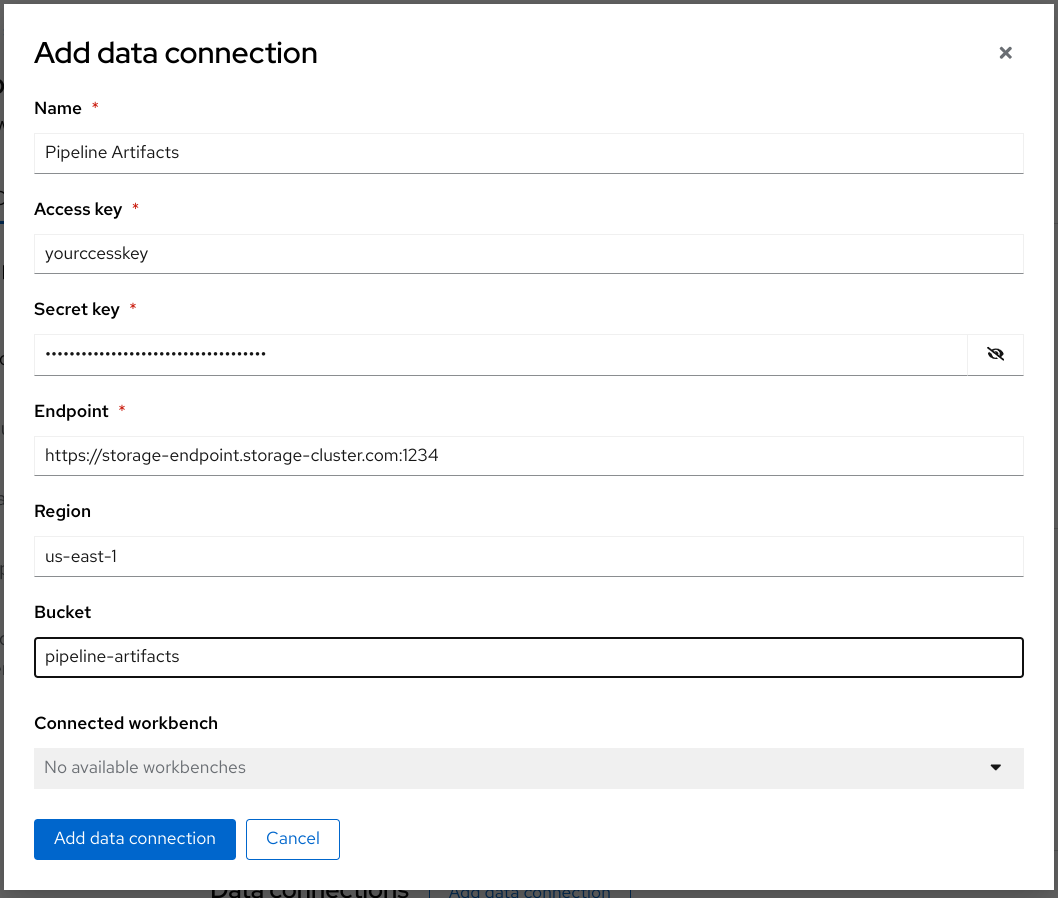Creating connections to your own S3-compatible object storage
If you have existing S3-compatible storage buckets that you want to use for this workshop, you must create a connection to one storage bucket for saving your data and models. If you want to complete the pipelines section of this workshop, create another connection to a different storage bucket for saving pipeline artifacts.
| If you do not have your own s3-compatible storage, or if you want to use a disposable local Minio instance instead, skip this task and follow the steps in Running a script to install local object storage buckets and create connections. The provided script automatically completes the following tasks for you: creates a Minio instance in your project, creates two storage buckets in that Minio instance, creates two connections in your project, one for each bucket and both using the same credentials, and installs required network policies for service mesh functionality. |
To create connections to your existing S3-compatible storage buckets, you need the following credential information for the storage buckets:
-
Endpoint URL
-
Access key
-
Secret key
-
Region
-
Bucket name
If you do not have this information, contact your storage administrator.
-
Create a connection for saving your data and models:
-
In the OpenShift AI dashboard, navigate to the page for your data science project.
-
Click the Connections tab, and then click Create connection.

-
In the Add connection modal, for the Connection type select S3 compatible object storage - v1.
-
Complete the Add connection form and name your connection My Storage. This connection is for saving your personal work, including data and models.

-
Click Create.
-
-
Create a connection for saving pipeline artifacts:
If you do not intend to complete the pipelines section of the workshop, you can skip this step. -
Click Add connection.
-
Complete the form and name your connection Pipeline Artifacts.

-
Click Create.
-
In the Connections tab for the project, check to see that your connections are listed.

|
If your cluster uses self-signed certificates, your OpenShift AI administrator might need to provide a certificate authority (CA) to securely connect to the S3 object storage, as described in Accessing S3-compatible object storage with self-signed certificates (Self-Managed) or Accessing S3-compatible object storage with self-signed certificates (Cloud Service). |
If you want to complete the pipelines section of this workshop, go to Enabling data science pipelines.
Otherwise, skip to Creating a workbench.